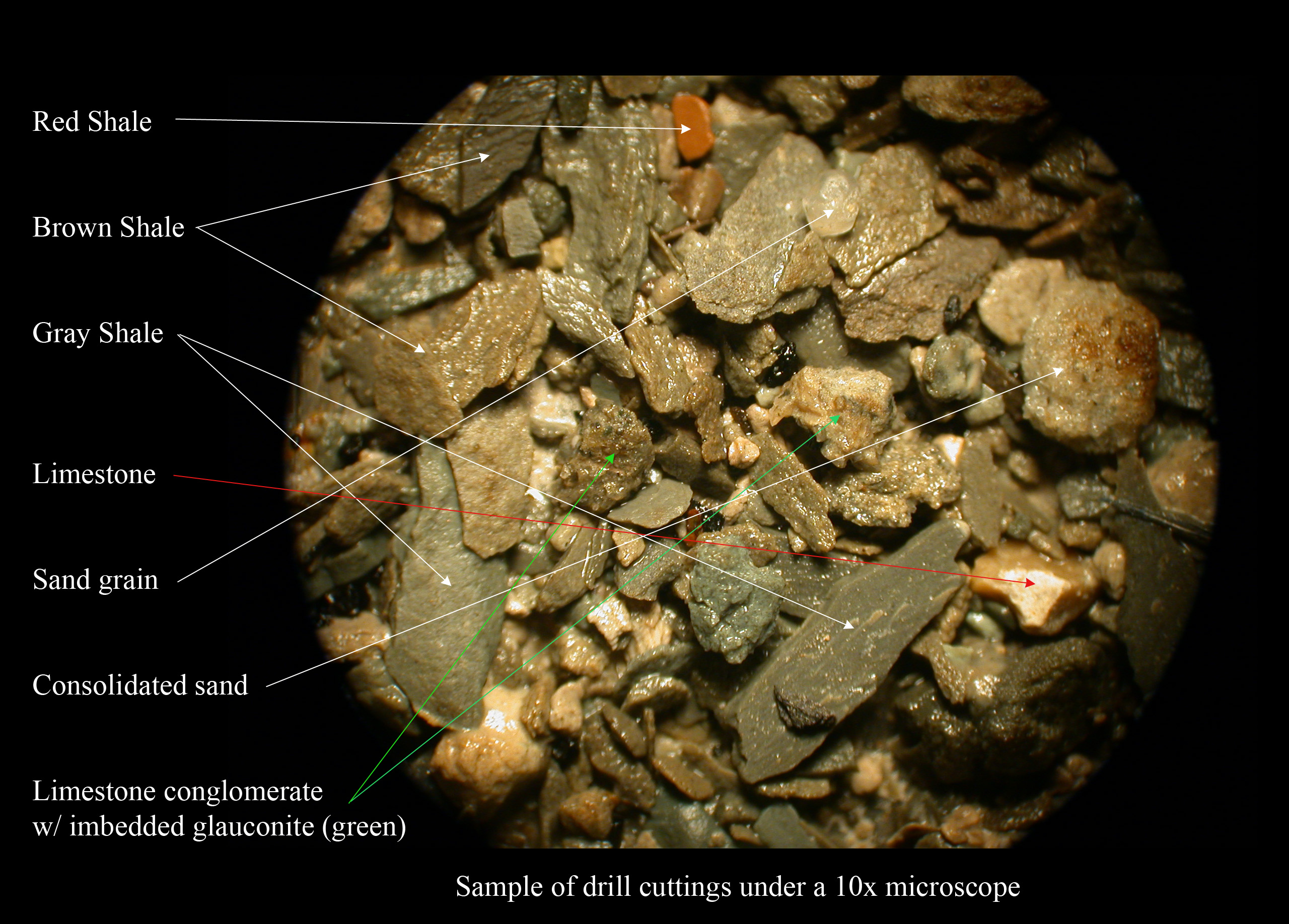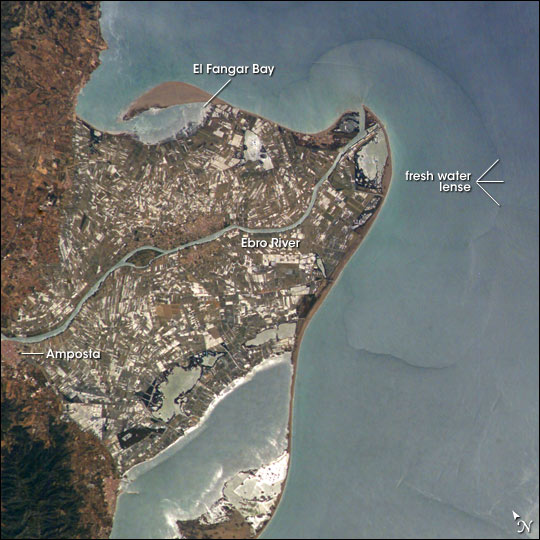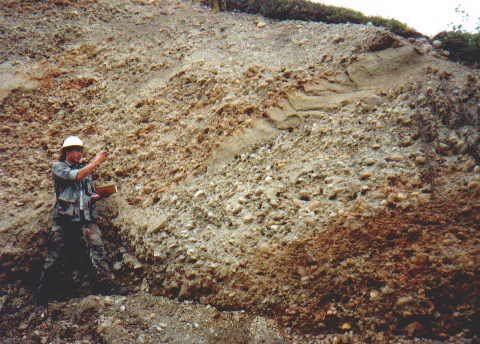|
Wianamatta Group
The Wianamatta Group is a geological feature of the Sydney Basin, New South Wales, Australia that directly overlies the older (but still Triassic in age) Hawkesbury sandstone and generally comprise fine grained sedimentary rocks such as shales and laminites as well as less common sandstone units. Group The Wianamatta Group is made up of the following units (listed in stratigraphic order): * Bringelly Shale * Minchinbury Sandstone * Ashfield Shale The Wianamatta Group was derived from the Aboriginal name for South Creek. It was officially established in 1952, fully attested in 1954 and further amended in 1979. Geology The Wianamatta Group is the youngest geological layer member of the Sydney Basin, and therefore lies at the highest point as the highest layer member. It was deposited in connection with a large river delta, which shifted over time from west to east. This is evidenced by the sequence of strata, which clearly show the transition from marine deposits in front of th ... [...More Info...] [...Related Items...] OR: [Wikipedia] [Google] [Baidu] |
Shale Pacific Highway Chatswood
Shale is a fine-grained, clastic sedimentary rock formed from mud that is a mix of flakes of clay minerals (hydrous aluminium phyllosilicates, e.g. kaolin, Al2 Si2 O5( OH)4) and tiny fragments ( silt-sized particles) of other minerals, especially quartz and calcite.Blatt, Harvey and Robert J. Tracy (1996) ''Petrology: Igneous, Sedimentary and Metamorphic'', 2nd ed., Freeman, pp. 281–292 Shale is characterized by its tendency to split into thin layers ( laminae) less than one centimeter in thickness. This property is called ''fissility''. Shale is the most common sedimentary rock. The term ''shale'' is sometimes applied more broadly, as essentially a synonym for mudrock, rather than in the more narrow sense of clay-rich fissile mudrock. Texture Shale typically exhibits varying degrees of fissility. Because of the parallel orientation of clay mineral flakes in shale, it breaks into thin layers, often splintery and usually parallel to the otherwise indistinguishable bedding p ... [...More Info...] [...Related Items...] OR: [Wikipedia] [Google] [Baidu] |
River Delta
A river delta is a landform shaped like a triangle, created by deposition of sediment that is carried by a river and enters slower-moving or stagnant water. This occurs where a river enters an ocean, sea, estuary, lake, reservoir, or (more rarely) another river that cannot carry away the supplied sediment. It is so named because its triangle shape resembles the Greek letter Delta. The size and shape of a delta is controlled by the balance between watershed processes that supply sediment, and receiving basin processes that redistribute, sequester, and export that sediment. The size, geometry, and location of the receiving basin also plays an important role in delta evolution. River deltas are important in human civilization, as they are major agricultural production centers and population centers. They can provide coastline defense and can impact drinking water supply. They are also ecologically important, with different species' assemblages depending on their landscape posi ... [...More Info...] [...Related Items...] OR: [Wikipedia] [Google] [Baidu] |
Mittagong Formation
The Mittagong Formation is a sedimentary rock unit in the Sydney Basin in eastern Australia. Formation Laid down in the Triassic Period, it may be seen as an interval of interbedded fine-grained sandstone and shale between the Ashfield Shale (above) and the Hawkesbury sandstone (below). The maximum thickness around Sydney may be ten metres. Near Town Hall railway station, the formation is 8 metres thick. In the type area at Mittagong it is 15 metres thick. Whereabouts In northern Sydney it can be seen in several areas, such as West Pymble and Mount Ku-ring-gai. This rock formation is associated with the critically endangered Sydney Turpentine-Ironbark Forest The Sydney Turpentine-Ironbark Forest (STIF) is dry sclerophyll forest community of Sydney, New South Wales, Australia, that is typically found in the Inner West and Northern region of Sydney. It is also among the three of these plant commun .... See also * Narrabeen group References Geologic formations ... [...More Info...] [...Related Items...] OR: [Wikipedia] [Google] [Baidu] |
Narrabeen Shale
The Narrabeen group of sedimentary rocks occurs in the Sydney Basin in eastern Australia. This series of rocks was formed in the Triassic Period. Geology It includes various rock types including lithic sandstone, quartz sandstone, siltstones, claystones, conglomerate and shales, some of which have fossils of plants and fish. Partly in these rocks plants, fish and amphibious animals are petrified. The red and green shales of the Narrabeen Group are water-tight over the sandstone bodies and the shale of Bald Hill, which forms the top layer of the Narrabeen Group, forms a regional water-barrier layer. Over the Narrabeen Group, the younger stratigraphic formation of Hawkesbury sandstones accumulated. Structure Above the Narrabeen group is the younger less fertile Hawkesbury sandstone. Below are Permian sedimentary rocks including measures of coal broadly known as the Illawarra Coal Measures. Whereabouts The Narrabeen group is most famously seen as The Three Sisters ... [...More Info...] [...Related Items...] OR: [Wikipedia] [Google] [Baidu] |
Cumberland Plain
The Cumberland Plain, an IBRA biogeographic region, is a relatively flat region lying to the west of Sydney CBD in New South Wales, Australia. Cumberland Basin is the preferred physiographic and geological term for the low-lying plain of the Permian-Triassic Sydney Basin found between Sydney and the Blue Mountains, and it is a structural sub-basin of the Sydney Basin. The Cumberland Plain has an area of roughly , which lies on Triassic shales and sandstones. Shaping the geography of Sydney, it extends from north of Windsor in the north, to Picton in the south; and from the Nepean-Hawkesbury River in the west almost to Sydney City's Inner West in the east. Much of the Sydney metropolitan area is located on the Plain. The Hornsby Plateau is located to the north and is dissected by steep valleys. The plain takes its name from Cumberland County, in which it is situated, one of the cadastral land divisions of New South Wales. The name ''Cumberland'' was conferred on the ... [...More Info...] [...Related Items...] OR: [Wikipedia] [Google] [Baidu] |
Saline (medicine)
Saline (also known as saline solution) is a mixture of sodium chloride (salt) and water. It has a number of uses in medicine including cleaning wounds, removal and storage of contact lenses, and help with dry eyes. By injection into a vein it is used to treat dehydration such as that from gastroenteritis and diabetic ketoacidosis. Large amounts may result in fluid overload, swelling, acidosis, and high blood sodium. In those with long-standing low blood sodium, excessive use may result in osmotic demyelination syndrome. Saline is in the crystalloid family of medications. It is most commonly used as a sterile 9 g of salt per litre (0.9%) solution, known as normal saline. Higher and lower concentrations may also occasionally be used. Saline is acidic, with a pH of 5.5 (due mainly to dissolved carbon dioxide). The medical use of saline began around 1831. It is on the World Health Organization's List of Essential Medicines. In 2020, sodium was the 274th mos ... [...More Info...] [...Related Items...] OR: [Wikipedia] [Google] [Baidu] |
Groundwater
Groundwater is the water present beneath Earth's surface in rock and soil pore spaces and in the fractures of rock formations. About 30 percent of all readily available freshwater in the world is groundwater. A unit of rock or an unconsolidated deposit is called an aquifer when it can yield a usable quantity of water. The depth at which soil pore spaces or fractures and voids in rock become completely saturated with water is called the water table. Groundwater is recharged from the surface; it may discharge from the surface naturally at springs and seeps, and can form oases or wetlands. Groundwater is also often withdrawn for agricultural, municipal, and industrial use by constructing and operating extraction wells. The study of the distribution and movement of groundwater is hydrogeology, also called groundwater hydrology. Typically, groundwater is thought of as water flowing through shallow aquifers, but, in the technical sense, it can also contain soil moisture, per ... [...More Info...] [...Related Items...] OR: [Wikipedia] [Google] [Baidu] |
Podsol
In soil science, podzols are the typical soils of coniferous or boreal forests and also the typical soils of eucalypt forests and heathlands in southern Australia. In Western Europe, podzols develop on heathland, which is often a construct of human interference through grazing and burning. In some British moorlands with podzolic soils, cambisols are preserved under Bronze Age barrows (Dimbleby, 1962). Term Podzol means "under-ash" and is derived from the Russian под (pod) + зола́ (zola); the full form is "подзо́листая по́чва" (podzolistaya pochva, "under-ashed soil"). The term was first given in middle of 1875 by Vasily Dokuchaev. It refers to the common experience of Russian peasants of plowing up an apparent under-layer of ash (leached or E horizon) during first plowing of a virgin soil of this type. Characteristics Podzols can occur on almost any parent material but generally derive from either quartz-rich sands and sandstone or sedimentary debris ... [...More Info...] [...Related Items...] OR: [Wikipedia] [Google] [Baidu] |
Claystone
Mudrocks are a class of fine-grained siliciclastic sedimentary rocks. The varying types of mudrocks include siltstone, claystone, mudstone, slate, and shale. Most of the particles of which the stone is composed are less than and are too small to study readily in the field. At first sight, the rock types appear quite similar; however, there are important differences in composition and nomenclature. There has been a great deal of disagreement involving the classification of mudrocks. A few important hurdles to their classification include the following: # Mudrocks are the least understood and among the most understudied sedimentary rocks to date. # Studying mudrock constituents is difficult due to their diminutive size and susceptibility to weathering on outcrops. # And most importantly, scientists accept more than one classification scheme. Mudrocks make up 50% of the sedimentary rocks in the geologic record and are easily the most widespread deposits on Earth. Fine sedimen ... [...More Info...] [...Related Items...] OR: [Wikipedia] [Google] [Baidu] |
Weathering
Weathering is the deterioration of rocks, soils and minerals as well as wood and artificial materials through contact with water, atmospheric gases, and biological organisms. Weathering occurs '' in situ'' (on site, with little or no movement), and so is distinct from erosion, which involves the transport of rocks and minerals by agents such as water, ice, snow, wind, waves and gravity. Weathering processes are divided into ''physical'' and ''chemical weathering''. Physical weathering involves the breakdown of rocks and soils through the mechanical effects of heat, water, ice, or other agents. Chemical weathering involves the chemical reaction of water, atmospheric gases, and biologically produced chemicals with rocks and soils. Water is the principal agent behind both physical and chemical weathering, though atmospheric oxygen and carbon dioxide and the activities of biological organisms are also important. Chemical weathering by biological action is also known as biolog ... [...More Info...] [...Related Items...] OR: [Wikipedia] [Google] [Baidu] |
Alluvial
Alluvium (from Latin ''alluvius'', from ''alluere'' 'to wash against') is loose clay, silt, sand, or gravel that has been deposited by running water in a stream bed, on a floodplain, in an alluvial fan or beach, or in similar settings. Alluvium is also sometimes called alluvial deposit. Alluvium is typically geologically young and is not consolidated into solid rock. Sediments deposited underwater, in seas, estuaries, lakes, or ponds, are not described as alluvium. Floodplain alluvium can be highly fertile, and supported some of the earliest human civilizations. Definitions The present consensus is that "alluvium" refers to loose sediments of all types deposited by running water in floodplains or in alluvial fans or related landforms. However, the meaning of the term has varied considerably since it was first defined in the French dictionary of Antoine Furetière, posthumously published in 1690. Drawing upon concepts from Roman law, Furetière defined '' alluvion'' ( ... [...More Info...] [...Related Items...] OR: [Wikipedia] [Google] [Baidu] |







